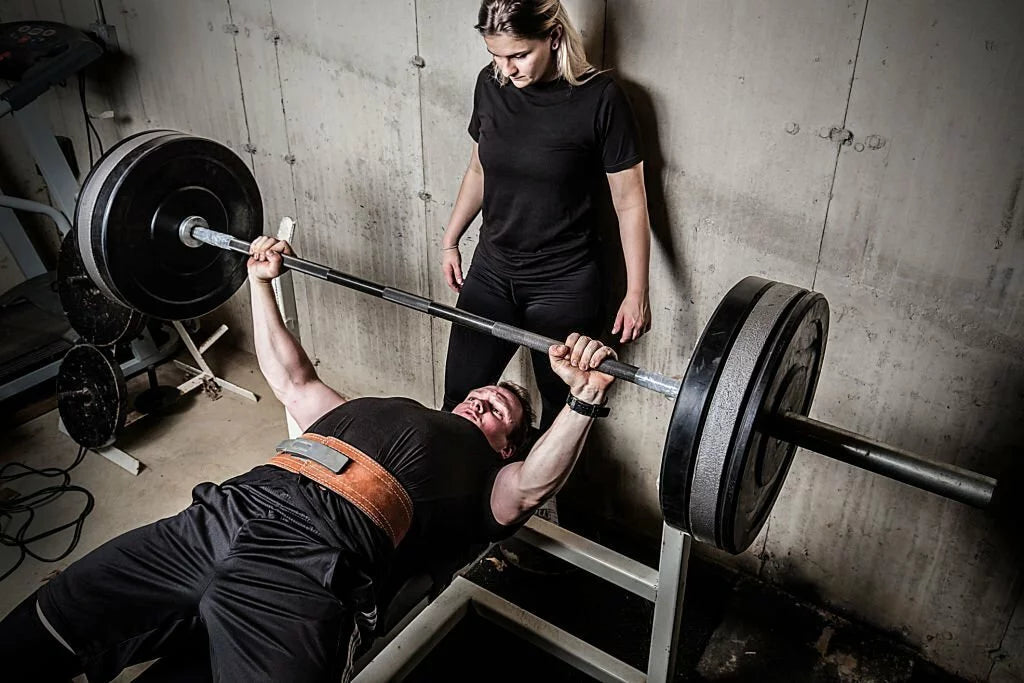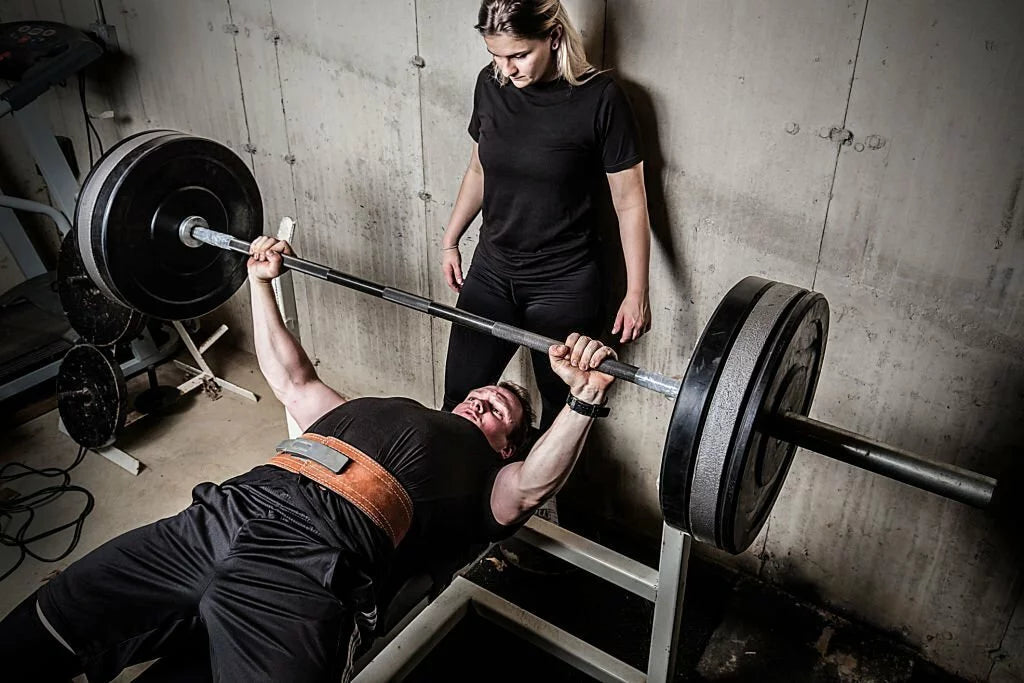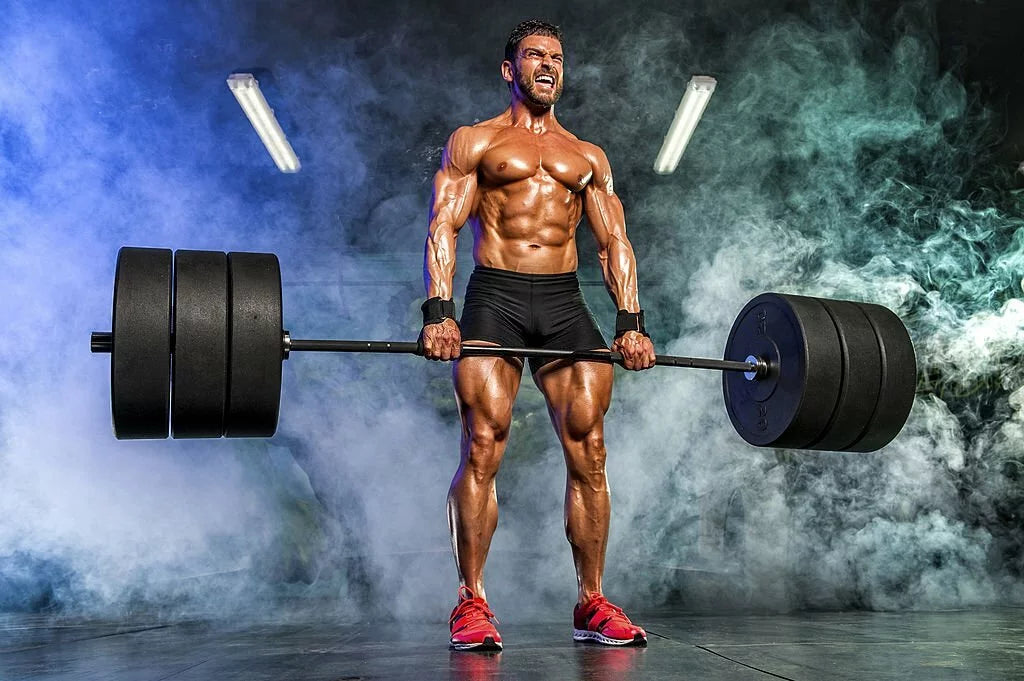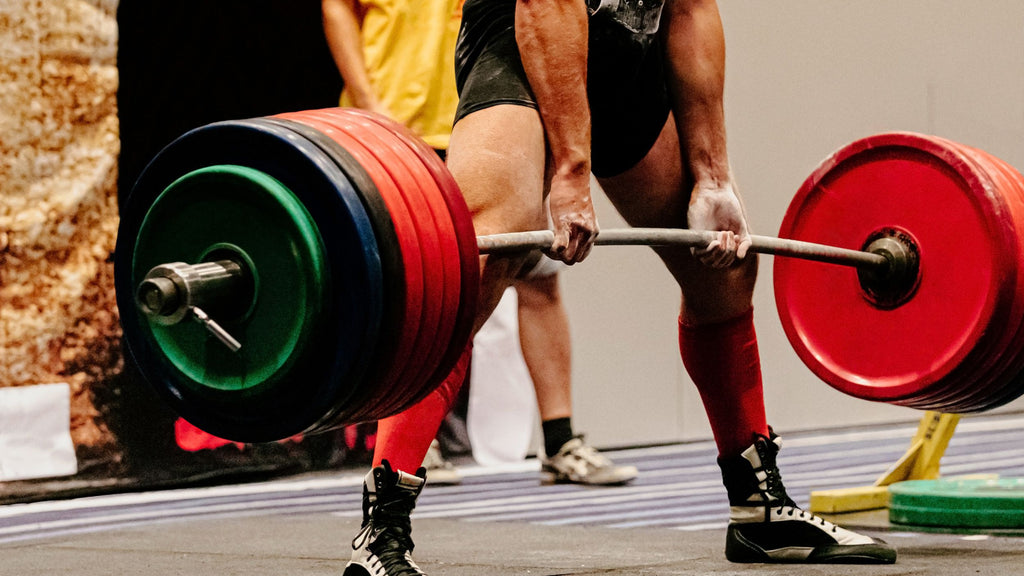Powerlifting vs. Weightlifting: Which Strength Sport Reigns Supreme?


In the arena of strength sports, two disciplines reign supreme: powerlifting and weightlifting. Each sport, with its unique set of rules, techniques, and challenges, offers a distinct path to mastering physical strength. As a seasoned powerlifter, I have lived the journey of pushing physical limits and embracing the discipline these sports demand. This article aims to dissect and explore these formidable strength sports, providing insights into their nuances and the passion they ignite in their athletes.
Powerlifting and weightlifting, though often used interchangeably, are different in their essence and execution. Powerlifting focuses on the maximum strength one can muster in three specific lifts, while weightlifting, an Olympic sport, tests one's explosive power and technical prowess. In this detailed exploration, we'll delve into each sport's history, technique, training regimes, and the sheer thrill of competition. Whether you're a budding athlete or a curious enthusiast, this guide will illuminate the paths of powerlifting and weightlifting, helping you understand and appreciate their unique challenges and rewards.
What is Powerlifting?
Powerlifting is a sport where athletes aim to lift as much weight as possible in three main lifts: the squat, bench press, and deadlift. Originating from roots in strongman competitions, powerlifting has evolved into a sport focusing on pure strength. Each lift in powerlifting is a unique test of different muscle groups, demanding not only physical strength but also mental resilience and strategic planning.
In powerlifting, success is measured in the total weight lifted across these three exercises. This simplicity in concept belies the complexity and depth of training and technique required. Powerlifting is not just about brute force; it's a sophisticated interplay of biomechanics, training methodology, and psychological fortitude.
The Core Lifts of Powerlifting
Squat: Technique and Significance
The squat, often the first lift in powerlifting competitions, is a foundational movement in strength training. It primarily targets the muscles of the lower body, including the quadriceps, hamstrings, and glutes, while also engaging the core for stability. Achieving the right depth and maintaining proper form is crucial for a successful squat, making it a challenging yet rewarding lift.
Technique in the squat involves more than just lowering and lifting weights. A powerlifter must master the art of balance, control, and maintaining tension throughout the body. The squat sets the stage for a powerlifting meet, testing an athlete's strength, technique, and mental grit right from the start.
Bench Press: More Than Just Upper Body Strength
Often perceived as a measure of upper body strength, the bench press in powerlifting demands much more. It is a complex exercise that requires the coordinated effort of the chest, shoulders, arms, and even the legs. The technique involves precise control of the barbell, a strategic arch in the back, and effective leg drive.
The bench press is a test of both strength and technique. A successful lift requires maintaining a balance between power and control, ensuring the barbell moves in a stable and efficient path. In powerlifting, the bench press serves as a middle ground between the squat and deadlift, challenging athletes in unique ways.
[Related: 12 Ways To Increase Your bench Press in Powerlifting]
Deadlift: The Ultimate Test of Power
The deadlift is the quintessential display of raw strength in powerlifting. It involves lifting a loaded barbell off the ground to a standing position, engaging muscles throughout the body. This lift tests an athlete's grip strength, back power, leg drive, and overall endurance.
The deadlift is both physically and mentally demanding. It's often the final lift in a competition, requiring athletes to muster every ounce of strength and determination they have left. The deadlift is not just about lifting heavy; it's about technique, timing, and sheer willpower.
Training for Powerlifting
Training for powerlifting is a blend of strength building, skill refinement, and mental preparation. A typical training regimen includes working on the three core lifts, supplemented with accessory exercises to build overall strength and address weaknesses. Emphasis is also placed on recovery and injury prevention, as the intense nature of the sport demands a well-cared-for body.
A powerlifting training program is tailored to build peak strength over time, often culminating in a competition. This involves periodized training cycles, focusing on different aspects of strength and technique at various stages. The journey of a powerlifter is not just about the hours spent lifting weights; it's about a disciplined approach to training, nutrition, rest, and mental toughness.
[Related: Best Powerlifting Exercises For Beginners]
Rules and Regulations in Powerlifting
In powerlifting, athletes are judged on their ability to successfully lift the maximum weight in the squat, bench press, and deadlift. Each lift has specific rules regarding the acceptable technique. For instance, in the squat, the hip crease must go below the top of the knee at the bottom of the lift; in the bench press, the bar must touch the athlete's chest and pause before being pressed back up; and in the deadlift, the athlete must lift the barbell to full extension without hitching or resting it on the legs.
Powerlifting is governed by several federations, each with its own set of rules and regulations. The most prominent among these is the International Powerlifting Federation (IPF), known for its strict drug-testing protocols and adherence to uniform standards. Other notable federations include the World Raw Powerlifting Federation (WRPF) and the United States Powerlifting Association (USPA). These organizations differ in their rules regarding equipment, weight classes, and drug testing policies.
In powerlifting competitions, particularly those sanctioned by the IPF, there are strict guidelines regarding the equipment that athletes can use. Athletes are required to use only IPF-approved gear. This includes the lifting suit, weightlifting belt, knee sleeves, wrist wraps, and weightlifting shoes. The purpose of these regulations is to ensure fair competition and to keep the focus on raw strength and technique rather than on the advantages provided by specialized equipment. Different federations have varying rules regarding equipment, with some allowing the use of supportive gear like squat suits and bench shirts.
What is Weightlifting?
Weightlifting, often known as Olympic weightlifting, is a sport that tests an athlete's ability to lift weights in two complex movements: the snatch and the clean & jerk. This discipline, recognized in the Olympics, goes beyond mere strength; it demands agility, technique, and explosive power. As a powerlifter, I've always admired the dynamic nature of weightlifting, where precision and speed are as crucial as the strength itself.
Weightlifting's history is deeply rooted in the Olympic tradition, making it a prestigious and highly competitive sport. Athletes in weightlifting train to perfect two lifts, both of which are intricate and require years of dedicated practice to master. The sport offers a unique challenge, combining the elements of raw power, finesse, and split-second timing.
The Dynamic Lifts of Weightlifting
Olympic weightlifting, is a sport that tests an athlete's ability to lift weights in two complex movements: the snatch and the clean & jerk. Unlike powerlifting, which involves three distinct lifts, Olympic weightlifting is unique in its focus on just two lifts. This discipline, recognized in the Olympics, demands not only strength but also agility, technique, and explosive power. As a powerlifter, I have always admired the dynamic and technical nature of weightlifting, where precision and speed are as crucial as the strength itself.
Weightlifting's journey in the Olympics has shaped it into a prestigious and highly competitive sport. In Olympic weightlifting, athletes compete in two events, and their success is determined by the combined total weight lifted in these events. This structure makes the sport not only a test of physical ability but also of strategy and mental fortitude. Athletes must excel in both lifts to achieve a competitive total, making the sport both challenging and exhilarating.
Snatch: Mastery of Coordination and Speed
The snatch is a mesmerizing lift, where the athlete lifts the barbell from the ground to overhead in one fluid motion. It is perhaps the most technical lift in all of strength sports, requiring impeccable coordination, timing, and explosive strength. The snatch not only tests an athlete's ability to lift heavy weights but also their flexibility and speed.
In the snatch, the athlete must quickly transition from a powerful upward thrust to dropping under the barbell, catching it in an overhead squat position. This movement demands a high level of body awareness and control, making it a true test of an athlete's skill and agility.
Clean & Jerk: A Two-Phase Power Display
The clean & jerk, the second lift in weightlifting, is a two-part movement: the clean, where the bar is lifted to the shoulders, and the jerk, where it's thrust overhead. This lift combines the elements of raw power in the clean and technical precision in the jerk. The clean & jerk showcases an athlete's ability to generate force and control heavy weights in a dynamic environment.
Each phase of the clean & jerk has its challenges and nuances. The clean requires a powerful pull and quick transition under the bar, while the jerk demands balance, coordination, and explosive power to successfully lift and stabilize the weight overhead. Mastering the clean & jerk is a journey of building strength and refining technique.
Rules and Regulations in Weightlifting
Olympic weightlifting, governed by the International Weightlifting Federation (IWF), involves two lifts: the snatch and the clean & jerk. In the snatch, the weightlifter must lift the barbell from the floor to overhead in one continuous motion. The clean & jerk is a two-part lift where the athlete first brings the barbell to the shoulders (clean) and then propels it overhead (jerk). Lifts are judged on criteria such as proper completion of the lift, maintaining control of the barbell, and finishing with the barbell motionless overhead.
The IWF sets the standard rules for weightlifting competitions worldwide. These rules dictate everything from the technique and execution of lifts to the equipment used and the categorization of weight classes. National federations, such as USA Weightlifting, align closely with IWF rules in their domestic competitions.
In Olympic weightlifting, the IWF oversees the equipment standards for competitions. Athletes are required to use IWF-certified weightlifting bars, plates, and collars. The weightlifting attire includes a singlet, weightlifting shoes, and optional accessories like wrist wraps, knee sleeves, and a belt. The use of these items is regulated to ensure they do not provide an unfair mechanical advantage. The IWF also sets standards for the competition platform, barbells, and weights to ensure uniformity across international competitions.
Training Insights for Weightlifting
Training for weightlifting involves a focus on the two main lifts, supplemented with a variety of accessory exercises and drills. Unlike powerlifting, where the emphasis is primarily on building maximal strength, weightlifting training includes a significant amount of work on mobility, speed, and technique. The complexity of the snatch and clean & jerk requires athletes to develop a wide range of physical attributes.
A weightlifter's training regimen often includes variations of the main lifts to improve specific aspects of the movements, such as snatch pulls or clean deadlifts. Additionally, exercises to enhance flexibility, coordination, and explosive power are integral. This comprehensive approach ensures that an athlete develops the necessary skills and physical capabilities to excel in weightlifting.
This section covers weightlifting, offering an insight into its lifts, training, and the unique blend of power and technique required. You can continue in a similar manner for the remaining sections, exploring the similarities and differences between the two sports, and concluding with advice for those considering taking up either discipline. Remember to keep the tone engaging and informative throughout the article.
Differences Between Powerlifting and Weightlifting
Despite their distinct differences, powerlifting and weightlifting share common ground that unites them in the broader spectrum of strength sports. Both require an unwavering dedication to training, a deep understanding of lifting mechanics, and a commitment to continuous improvement. As a powerlifter, I've always respected the dedication of weightlifters, as our paths are parallel in the pursuit of strength.
At their core, both sports focus on lifting weights in a competitive setting, with athletes striving to push their physical limits. This pursuit fosters a community spirit and camaraderie among athletes, irrespective of the sport they choose. The discipline, resilience, and mental toughness developed in training are universal traits shared by powerlifters and weightlifters alike.
Key Differences That Set Them Apart
While powerlifting and weightlifting may seem similar to the uninitiated, they diverge significantly in their approach, techniques, and competition style. Powerlifting is about maximal strength, measuring an athlete's ability to lift the heaviest weights in three core lifts. In contrast, weightlifting emphasizes speed, flexibility, and technique, with athletes executing complex movements to lift weights overhead.
The nature of the lifts in each sport dictates different training emphases. Powerlifters spend more time developing raw strength and perfecting their form in the squat, bench press, and deadlift. Weightlifters, on the other hand, focus on honing explosive power and technical precision in the snatch and clean & jerk. These differing objectives shape the training methods, competition strategies, and physical attributes ideal for each sport.
Choosing Your Path
Who Should Consider Powerlifting?
Powerlifting is ideal for those who are drawn to the challenge of raw strength and the simplicity of its core lifts. If you find satisfaction in progressively lifting heavier weights and have a penchant for meticulous technique refinement, powerlifting might be your calling. It's a sport that welcomes athletes of all sizes and backgrounds, with weight classes ensuring fair competition.
The beauty of powerlifting lies in its accessibility. The basic requirements of a barbell, weights, and a power rack can be found in most gyms. This simplicity allows anyone with the determination and discipline to embark on a powerlifting journey, making it an inclusive and rewarding sport.
Who Is Suited for Weightlifting?
Weightlifting, with its dynamic and technically demanding lifts, is well-suited for those who enjoy a blend of strength, agility, and coordination. If you're intrigued by the challenge of executing complex movements with precision and have a desire to develop explosive power, weightlifting could be your sport of choice. It appeals to those who appreciate the finesse and athleticism required to master the snatch and clean & jerk.
The path to weightlifting requires access to specialized equipment and coaching, given the technical nature of its lifts. It's a sport that not only builds physical strength but also enhances flexibility, coordination, and mental agility. For those drawn to the artistry and challenge of Olympic-style lifts, weightlifting offers a fulfilling and competitive outlet.
Conclusion
The worlds of powerlifting and weightlifting, while distinct in their essence, are united in their celebration of human strength and determination. Whether you choose the path of the powerlifter, with its focus on maximal strength in three key lifts, or the route of the weightlifter, with its emphasis on technique and explosive power, you embark on a journey of self-discovery and physical achievement.
Both sports offer unique challenges and rewards, and both foster a community of athletes dedicated to pushing the boundaries of what's possible. As you step into the world of strength sports, remember that the journey is as important as the destination. Embrace the discipline, savor the progress, and revel in the strength you build along the way. The barbell awaits – the choice is yours.










